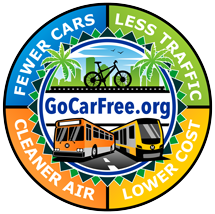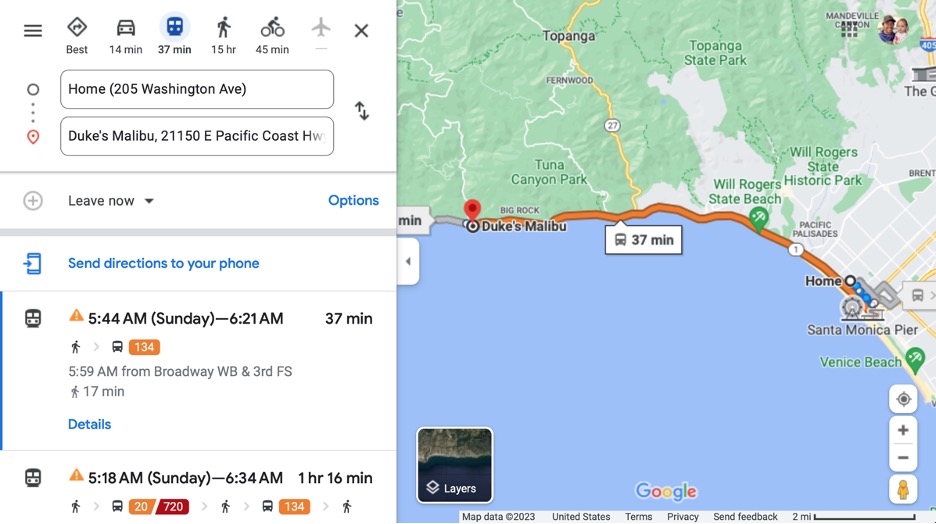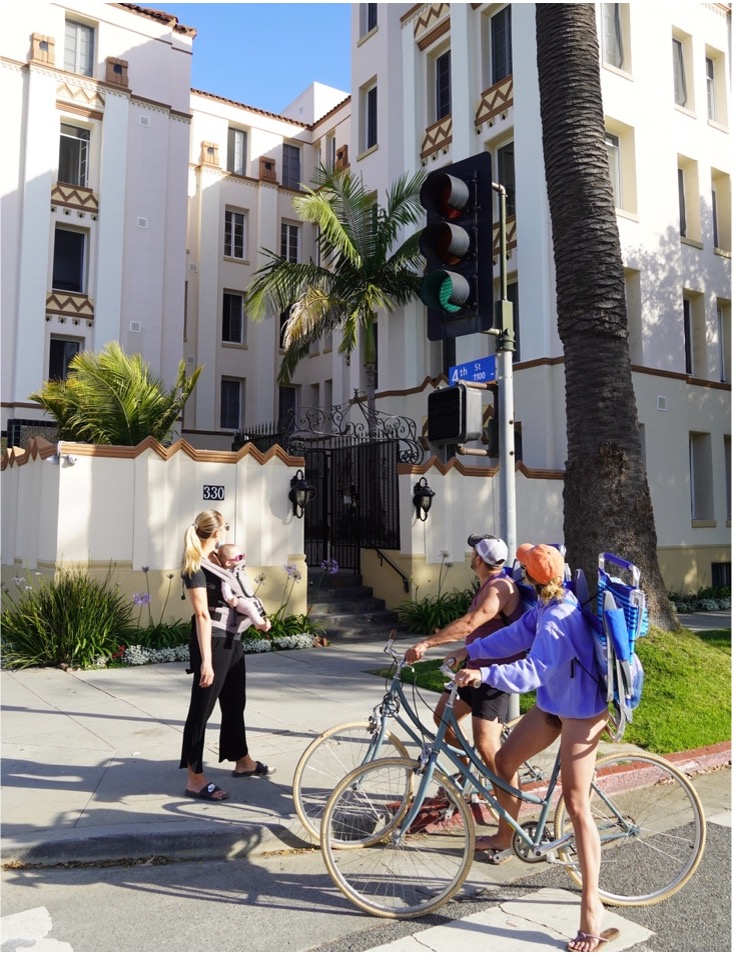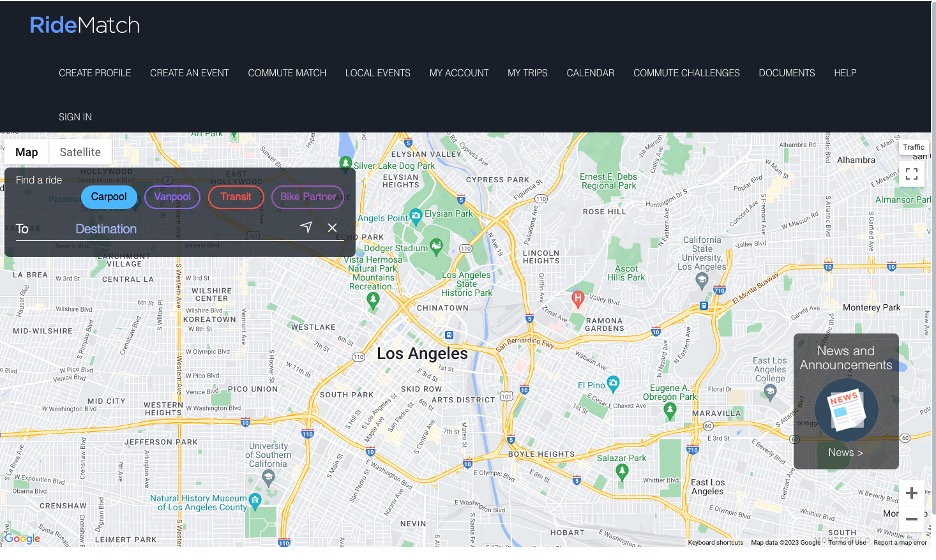
Part Two: Car Free Commuting
Lesson 8
Easier Than You Think: Getting to Work without a Car
“For many people, commuting is the worst part of the day, and policies that can make commuting shorter and more convenient would be a straightforward way to reduce minor but widespread suffering.”
– Daniel Kahneman, Nobel Prize-winning psychologist
Full-Time Telecommuters… Skip to Part Three
During the COVID pandemic tens of millions of workers began telecommuting or working remotely. If you work from home most or all of the time you don’t need to worry about commuting. Even if you have to go to the office occasionally, I think you’ll find it easy to go car free. Full-time telecommuters can probably skip Part Two: Car Free Commuting, and go directly to Part Three.
Being able to get to and from work or school reliably is a fundamental requirement for living car free. Clearly, if you can’t get to your job or to your classes on time, you’ve got problems. The next six lessons will help you find a way to commute car free that works for your situation.
If you follow the strategies in Part Two, not only will you be able to get to work reliably, you’ll also find your car free commute more enjoyable and more productive. At the end of this lesson, we’ll even reveal a system that virtually guarantees you’ll never miss work or school because you don’t have a car.
Environmental influencer Robin Greenfield has a whole series of excellent videos on sustainable living. Check out this short video on sustainable transportation options.
Nearly 40 Million Americans Don’t Drive to Work
I often hear car owners say, “There is absolutely no other way for me to get to work. I have to drive.” Well, as I explained in Lesson 5, nearly 40 million Americans don’t drive a car to work. They still go to work every day; they’ve just found more cost-effective and sustainable ways to get there. And with a little research you, too, can probably get to work or to class without a car.
As cited in Lesson 5, according to the 2018 American Community Survey conducted by the U.S. Census Bureau:
- 7,575,000 people commute to work by public transit
- 13,914,000 people carpool to work
- 4,019,000 people walk to work
- 2 million commute by rideshare (Uber, Lyft, etc.) or taxi
- 158,000 commute by motorcycle
- 2.8 million occasionally commute by bicycle, moped, or scooter
- 773,000 regularly commute by bicycle
- 8,194,000 work remotely and do not commute at all
That’s more than 39 million people! If they can do it, what’s stopping you?
Researching Transportation Options
What would you do if gas prices shot up to $10 per gallon? In light of the current political situations and armed conflicts around the globe, $10 gas could easily happen at any time.
If gas jumped up to $10 per gallon, you’d probably start looking really hard for a way to get to work that didn’t involve driving. Could you ride the bus? Take the train? Carpool? Ride your bicycle? Buy an e-bike? These are the questions we’ll examine in this lesson. In other words, is your car truly necessary, or is it just a convenient habit?
Researching transportation alternatives is simple and easy and won’t take much time at all. Half the battle is just opening your eyes to what’s around you. Here are the best ways to find a car free route to work.
Top Ten Cities for Car free Commuting
- Boston
- Chicago
- Denver
- New York
- Philadelphia
- Portland
- San Diego
- San Francisco
- Seattle
- Washington, D.C.
Source: Women’s Sports & Fitness magazine
Talk to Your Employer
This is step one. Most companies, universities, and organizations of all sizes have sustainability goals. One of those goals is usually to encourage employees, students, and visitors to drive less and commute car free. This is a critical step in meeting environmental goals because hundreds of employees or thousands of students all driving to work or to a college campus creates a tremendous amount of air pollution, greenhouse gases, noise pollution, traffic congestion, and expense.
Consider that the average cost of a parking space in a multi-deck parking garage is $50,000. Now multiply that by thousands of cars and you can see how expensive it is for any organization to accommodate a large daily influx of vehicles. This is why most large employers want to make it as easy as possible for people to commute car free, and they often provide incentives.
Employer-paid incentives might include: free or discounted monthly transit passes, lower negotiated rates with Uber or Lyft, guaranteed ride home programs, company paid shuttle buses to and from nearby transit stops, company carpooling programs, expanded bike racks or secure bike lockers, showers and locker rooms for bicycle commuters, permission to keep your bike in your office or cubicle, cash incentives for car free commuters, lower health insurance premiums for people who don’t drive, coupons or other rewards programs, and information resources, brochures, or even web portals that explain the best ways to commute car free.
GoCarFree.org helps employers establish car free commuting programs and resources for organizations of all sizes. If you know of a business, nonprofit, school or university, city or town, government, or large event that would like to help people commute car free, please refer them to GoCarFree.org.
Check with human resources or the transportation services department at work. Tell them you want to commute car free and ask for help. If your employer does not have a formal program to assist car free commuters then at the very least they will be able to direct you to other employees who don’t drive to work. “Talk to Lisa Smith in the accounting department. She has organized an informal bicycle commuting group. They meet for lunch, talk about riding their bikes to work, and even go on weekend rides together.”
Ask Your Co-Workers
If HR can’t help you, ask your coworkers directly. People you work with are a good source of car free commuting information because they go to the same place you do every day. If you have an internal email system, send out a mass email asking to hear from car free commuters. Or post a flyer on a company bulletin board or on the refrigerator in the lunchroom. Chances are good you’ll find a few people who don’t drive to work. Ask them for advice and suggestions.

Use Google Maps
Google Maps has a robust feature set that includes travel by car, public transportation, bicycle, and walking. First search for the place or address you’re trying to get to. Then click on “Directions.” Then at the top left of the page click on either the icon of the train, the person walking, or the cyclist. Then Google Maps will show you the route on a map and estimate the time it will take to get there. If you select public transportation, Google will even list the bus or train routes you’ll need to take.
If you zoom in on the starting point, Google Maps will show you exactly where the transit stop is located. And it will display a blue dotted line which indicates the walking route you’ll take to get there.

Google Maps really makes car free transportation easy. I wish I had access to this technology when I first went car free years ago. Apple Maps and other apps have similar features.
But, of course, walking, biking, and public transportation are not the only modes of transportation when you go car free. So here are some more ideas.
Explore Your Neighborhood and Community
If you currently have a car, take a drive around the neighborhood where you live. Look for things like bike paths, bus stops, sidewalks, transit stops, light rail lines, hotels with taxi stands, pedestrian overpasses, park-and-ride lots, car-sharing hubs, rental-car company locations, shuttle and trolley stops, and carpool or vanpool sites. Make a note of what you find. We’ll show you what to do with the information later.
Talk to Friends and Neighbors
You might be surprised to learn that your next-door neighbor or a friend from down the street takes the bus or rides his bike to work. But you will never know unless you ask. Finding someone on your street or block who can show you the ropes is one of the best ways to learn about car free commuting in your area.
Also take note of bicyclists, motorcyclists, scooter riders, walkers, joggers, in-line skaters, and other people moving around your neighborhood without a car. Stop and ask them where they’re headed and how they get to work and back. Most people who don’t rely on a car for their daily transportation are proud of that fact, and they’re usually eager to talk about it.
The NextDoor app is also a good place to look. Just scroll through the posts or do a search for “car free commuting.” Or better yet, make your own post about where you live and where you are trying to get to for work, and ask for advice. I bet you’ll find other people who are car free who can help you with tips and suggestions.

Car Free Success Story:
I’ve lived car free for nearly ten years now in my hometown of Reno, Nevada. At first, the most powerful motivation was a financial one. After my first two years of living car free, I had saved around $10,000 by ditching my older Toyota. This enabled me to finance my first trips to Europe. The first four years I went for one month or so each year, the fifth year, for four months. And when I was only twenty-six years old I bought my first home – thanks in great part to the extra cash I had in the bank.
The initial challenge of going car free is the reorganization of one’s life that is helpful in order to live without a car in an American city, most of which are basically planned around automobiles. This might mean moving closer to where you work, learning and adapting to the public transport schedules, or exploring your town for the best bicycle routes. In the beginning it takes some research and discovery, but I found the challenge fun and it has proved to be extremely rewarding.

Visit Your Local Mass Transit Authority Website
Most cities have a public transportation system. Here is a list of every transit system in the US organized by state. You might be surprised that even small towns have robust public transportation.
One of the most important parts of a successful mass transit program is providing useful information to new users. A visit to your local transit authority website can usually provide you with a system map, a user’s guide, a trip planner, and commuting tips. You’ll also find fare structures, monthly pass information, and a list of rules and prohibited items.
Your first stop should be the system map. You’ll be able to see right away if a bus line or light rail stop is located near your home or office.
Do a Google Search
If you’re new to a city or you don’t know who the public transportation provider is, just type into Google your city name, the plus sign (+), and the words “public transit” in quotation marks. Or “your city” + “car free.”
For example, when I do this for the city where I live, I search “Santa Monica”+“public transit.” Or “Santa Monica” + “bicycle commuting.”
Note that many cities are served by multiple public transportation providers. For example, the City of Santa Monica is served by Santa Monica’s Big Blue Bus, Los Angeles Metro, Culver City Bus, and others. So take your time doing this research and make a list of all the options.
The top search results will probably be the official website of the public transit authorities in your city, followed by other groups and organizations that promote the use of mass transit or car free living. Your search results might also include YouTube videos on the topic.
Contact Local Groups and Bike Shops
Many cities have groups or clubs that advocate for bicycle commuting and/or living car free. These might be local chapters of national organizations, such as the League of American Bicyclists. These groups are easy to find by doing a Google search with the keywords “car free club”+“your city.” Or inquire at your local bike shop. Most bicycle shops can get you in touch with other bicycle commuters or local cycling clubs.
There are also bicycling, walking, motorcycling, and scooter clubs in almost every city. These organizations are an excellent source of information for commuting without a car. If your community doesn’t have a car free club, you could start one.

Use Carpooling Websites and Apps
As the cost of owning a car continues to escalate every year, so does the interest in carpooling. If two people are going from the same neighborhood to the same office building, why shouldn’t they ride together and split the costs?
Local and national websites and smartphone apps have sprung up to connect carpoolers. But often the easiest way to join or organize a carpool is through your employer. Ask your human resources representative if there is an organized carpool planner or bulletin board at your workplace. We’ll cover carpooling in more detail in lesson 11.
Call Your Local Chamber of Commerce
If you’re still striking out, you may want to call your local chamber of commerce. Efficient transportation is vital to the economic success of any city. And the chamber will be able to get you a list of all the transportation providers in the area.
Most chambers also have some sort of welcome kit, which they will be happy to send to you. These kits usually include maps, coupons, and information about local attractions, as well as a list of regional transportation providers.
Car Free Success Story:
I believe that nearly anyone can live car free; however, it requires some research and making careful choices. One thing that makes car free living easy is to live near your workplace. Another is to live near public transportation. A third is to understand that living car free doesn’t mean that you never use a car; just rent one when you want to go someplace outside the Hub.
Taking Notes and Brainstorming
Try not to make any firm decisions just yet about which form of transportation suits you best. There’s a lot of important information in the following lessons that may change your thinking. For now, just gather information, consult your employer’s HR department, talk to coworkers, get to know your neighborhood, surf the web, and take notes as you go.
This is a good time to do some alternative transportation brainstorming. Take a sheet of blank paper or open up a notetaking app on your phone and write down all the ideas you have about getting to work without a car. Don’t worry if an idea seems too outlandish or goofy. Sometimes those silly ideas lead to something viable later on.
Car Free Success Story:
Although I initially decided to lose the car to save money, that isn’t nearly as big of a concern for me today. I make approximately $90,000 a year, and my spouse makes about $70,000 a year. Rather, the biggest benefit for me is that not owning a car is just easier.
When we thought about buying a home last summer, before looking at anything I plotted the public transportation route to downtown. It had to be one mode only (i.e., no bus or train transfers), and it had to be less than thirty minutes, which is the longest commute I was willing to do. That ended up leading us to a condominium right next to the MAX light rail train. Bonus: not having to take care of a yard fits the stress-free attitude that being car free has given me.
Combining Modes of Transportation
While you’re in this information collecting phase it’s important to remember that you can combine modes of transportation to meet your needs. For example, the solution that ultimately works best for you may involve riding your bicycle two miles to a transit stop, then taking the bus or train from there. Or maybe you carpool most of the way to work, then use a folding electric scooter to go the final two miles. Keep this in mind as you research various alternatives.
Triple Redundancy
Here is a strategy that virtually guarantees reliable car free commuting so you never miss a day of work or show up late to school. Triple redundancy means that in addition to your primary mode of transportation to work, you also have two backup modes. If for some reason you can’t get to work the normal way, you have something to fall back on. A system of triple redundancy gives car free commuters confidence that they can get to work or school on time every day.
Here’s an example of triple redundancy. I normally commute by riding my bicycle to work. I know that eventually I’ll probably get a flat tire or have some other mechanical malfunction that renders the bicycle inoperable. Or the weather will be too awful to ride. My backup is to take public transportation. My third backup is to call an Uber or a Lyft.
I actually have a fourth backup, which is to call a coworker and ask if we can carpool. I discussed this carpool possibility with my coworker ahead of time. He knows I’m car free and I will only call if I have no other options, because he would have to drive about 10 minutes out of his way to pick me up. If he goes out of his way to pick me up, I told him I’d buy him lunch that day – a small price to pay for the peace of mind that I’ll never be unable to get to work. In more than 15 years of being car free I’ve never had to use my fourth backup.
In reality, there is even a fifth option – albeit an expensive one. That is to call a taxi. In my years of car free commuting, I have yet to call a taxi to get to work. (I have, however, taken a taxi ride home from parties or bars many times.)
Let’s also not forget that tens of millions of people began telecommuting or working remotely during the COVID pandemic. If your job allows occasional remote work, this is yet another layer of redundancy. “Hi, Boss. I’m having trouble getting to the office today because – as you know – I bicycle commute to work, and my bike has a flat tire. Do you mind if I work remotely today?”
Here are some more examples of triple redundancy:
|
Primary Mode
|
Secondary Mode
|
Emergency Backup
|
Be sure to think about triple redundancy as you do your research. The key is to have backups arranged ahead of time, so you know exactly what to do if you’re forced to go to plan B. You may never need your backups, but having them will give you the peace of mind to get rid of your car without worrying about getting to work.
